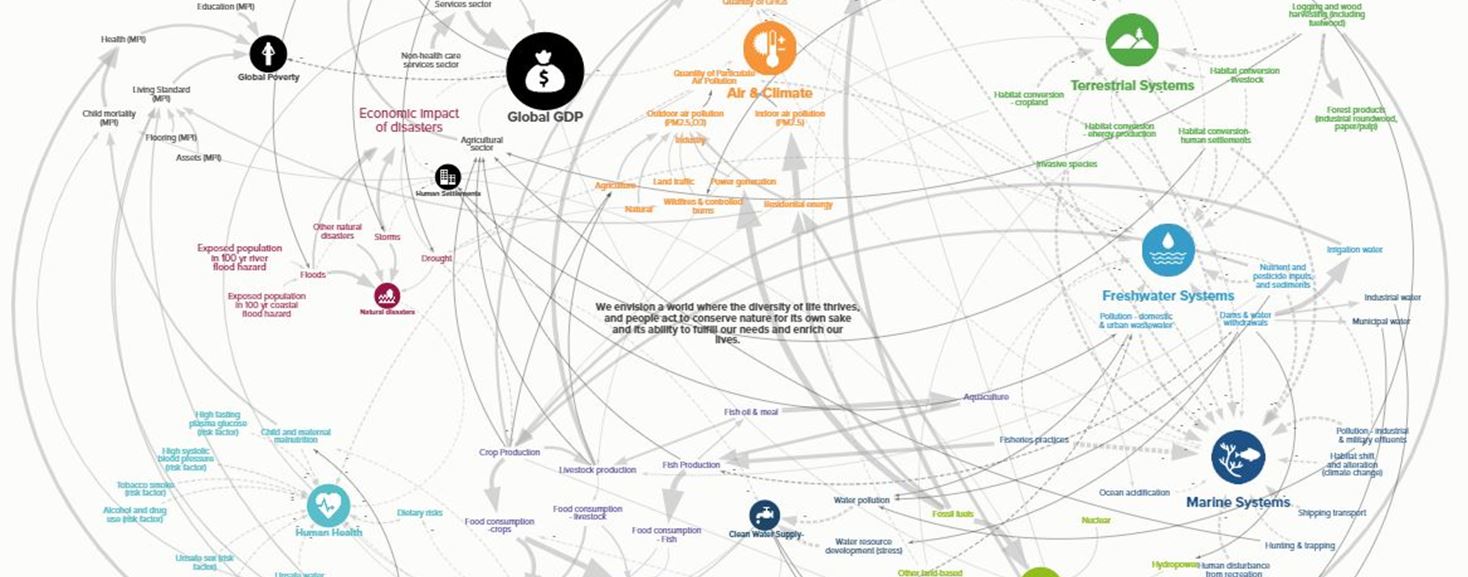Learning snapshot
101 | The power of mapping your network
For community organisations, network mapping can add significant value to community knowledge, unlocking useful insights for the achievement of enduring social impact.
01 March 2023
What is network mapping?
In simple terms, network mapping is the process of creating a visual representation of the connections and relationships between different entities. This might include things like people, organisations, services, or technologies, or even interlocking overlays of these entities.
However, network mapping can be so much more than a mere picture of a system. It can be an illustration of interdependency and complexity, and an opportunity to employ innovation and creativity. Network mapping is a powerful tool for understanding and optimising complex relationships, and it has a wide range of applications across many fields, including social, community, cultural and environmental services.
For community organisations striving to enable systems change at any level, one of the highest order benefits of network mapping is that it can allow for a big picture view. When dealing with a complex system, it can be easy to get bogged down in the detail and to lose sight of the overall structure; working in the system, rather than on it. For more insights into systems change and the role of grants and philanthropy see our article here.
Network mapping can allow an organisation to ‘zoom out’, helping to visually demonstrate how different parts of a system fit together, and how they contribute to its overall function. This can be incredibly valuable when trying to make sense of a new system, or to identify opportunities for improvement.
Network mapping can also be used to create visualisations that show the distribution of data across a geographic area, and to create interactive interfaces, charts, graphs, and other types of visualisations that help users understand data in a more intuitive and meaningful way.

Some key opportunities to use network mapping to unlock insights
Network mapping can help to identify the active relationships between key players and influencers within a system. This is as distinct from standard stakeholder mapping, which is a slightly simplified process of visualising the stakeholders of a product, project, or idea on a matrix and noting their interest in, and influence on a project.
A network map can make visible who is connected to whom, to foster an understanding of how those human connections might be influencing the behaviour of the system. This can be particularly valuable in politically driven systems, where understanding power dynamics can be crucial for success. At a community organisation level, by identifying key players and influencers, an organisation can target its efforts and resources more effectively and achieve better results.
Network mapping of data can make visible how different entities are connected to their stakeholders via technology, and how they interact with one another. This can help to identify patterns and trends that might not be immediately obvious from looking at the data alone, particularly for those who learn visually. For example, in analysing social media data, an organisation might use network mapping to identify the most influential users, or to see how different groups of users are interacting with one another. This can be valuable for understanding how to target marketing efforts, or for identifying potential areas of risk or competition.
Network mapping can also help an organisation to optimise the performance of a system. By visualising the connections and relationships between different entities, inefficiencies in the system can be identified and rectified. In mapping a supply chain, an organisation might use network mapping to identify places where logistical delays are routinely happening, or where there are too many hand-offs between different parties.
Finally, and importantly, network mapping can be used to identify potential new opportunities and engagements. By visualising the connections and relationships between different entities, gaps in the system can become clearer, and opportunities to creatively address those gaps, for instance via new innovations, products or services, can be identified. For example, a community organisation, in mapping areas of need, could use network mapping to help identify areas where there is high demand but fewer services. By identifying these potential opportunities, an organisation can take steps to develop new products or services that will meet the needs of the community.
Network mapping is a powerful tool for understanding and optimising complex systems. It can allow an organisation to see the big picture, identify key players and influencers, identify patterns and trends in data, optimise performance, identify potential threats and vulnerabilities, and identify potential new opportunities.

Melanie Bainbridge is a writer, sustainability professional, multi-arts professional and social impact advocate. Mel melds 20+ years of strategy, policy, project management and community engagement experience with communications and creative development skills to create inspiring impact narratives. Melanie is currently Senior Manager Knowledge & Insights, Lotterywest.
Learn about wellbeing
Understand how your community is going to help you to better target and plan your project.
Ready to plan your project?
Understand your vision, plan your impact and report on the outcomes of your project with three easy interactive tools in the Community Impact Planner.
Acknowledgement of Country
The Western Australian Community Impact Hub acknowledges and pays respect to the Traditional Owners of the land on which we are based, the Whadjuk people of the Noongar Nation and extends that respect to all the Traditional Owners and Elders of this country. We recognise the significant importance of their cultural heritage, values and beliefs and how these contribute to the positive health and wellbeing of the whole community.
